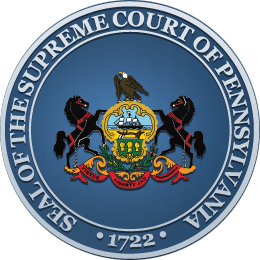News
Supreme Court of Pennsylvania Amends Policy to Broaden Public Access to Financial Records
News Article
June 23, 2008
HARRISBURG, June 23, 2008 — The Supreme Court of Pennsylvania is expanding the scope of its policy governing public access to the financial records of the Unified Judicial System to reflect changes in the state’s recently passed Right to Know Law. The revisions — outlined in an order issued today by the Court — amend the process for requesting and accessing financial records of the state court system that was formally adopted by the Court more than a year ago. The Court’s action is consistent with provisions of Act 3 of 2008, in particular Section 304’s provision that access to financial records may be accomplished by court rule or order, and is consistent with the supervisory and administrative authority of the Supreme Court established in Article V, Section 10 of Pennsylvania’s Constitution. The order takes effect Jan. 1, 2009. The Right to Know Law pertains to the financial records of the state court system that historically have been regarded by the Judiciary as publicly accessible — items such as budgets, spending, salaries and other uses of public funds. The long-time practice was formalized on May 14, 2007 under a Supreme Court order that created Rule of Judicial Administration No. 509. “The symbolic and practical application of the new Right to Know Law underscores the critical importance of government openness to the citizens of this Commonwealth,” Chief Justice of Pennsylvania Ronald D. Castille said. “With today’s court order, Pennsylvania’s Judiciary will continue to provide broad public access to financial records.” Among the changes in the rule are: • Requires the Administrative Office of Pennsylvania Courts to provide contract information on the Unified Judicial System’s Web site • Creates a procedure and timeframe for accessing copies of financial records of a judicial district through a records manager designated by the president judge. • Provides specific timeframes and includes an appeal procedure for judicial districts. The presumption of openness to the records of Pennsylvania’s Unified Judicial System was established long before the Supreme Court formalized in 2007 accessibility procedures to its financial records. “Given the substantial number of administrative and financial reports that the state judiciary provides the other two branches of government each year, and the widely-reported accessibility of the media to court expenditures, it’s been said that the Judiciary is the most open branch of state government,” Chief Justice Castille said. “Combined with the Judiciary’s statewide automation of court case records in 550 magisterial district judge offices, 60 criminal trial courts, and the three appellate courts — and accessibility to those records via the Judiciary’s Web site, I believe the Judiciary’s openness is well established. “These revisions to Pa. RJA No. 509 will only further define the Judiciary’s practical leadership in the area of records’ accessibility.” (Copies of the order and rule are posted on the UJS Web site.)